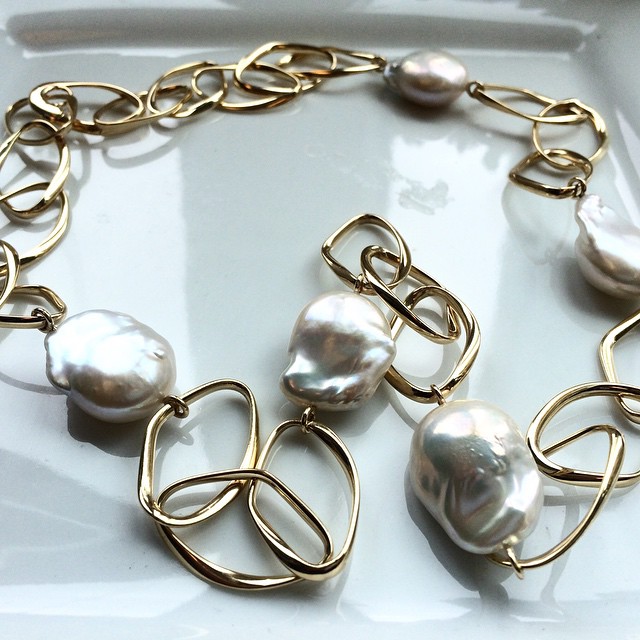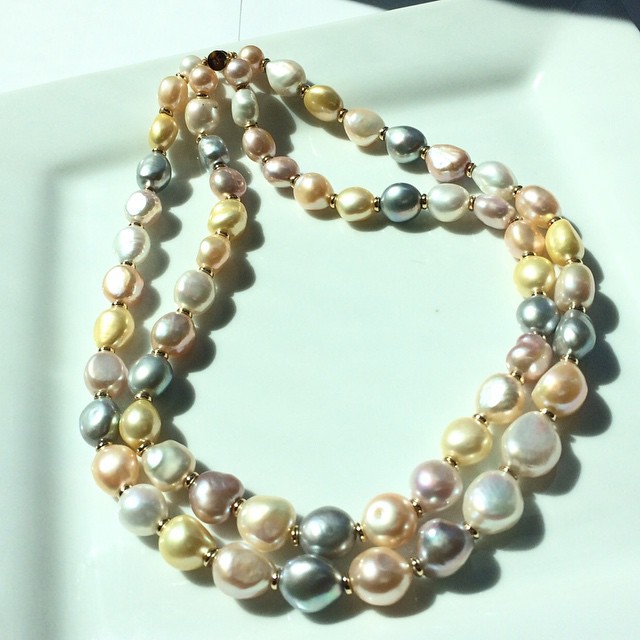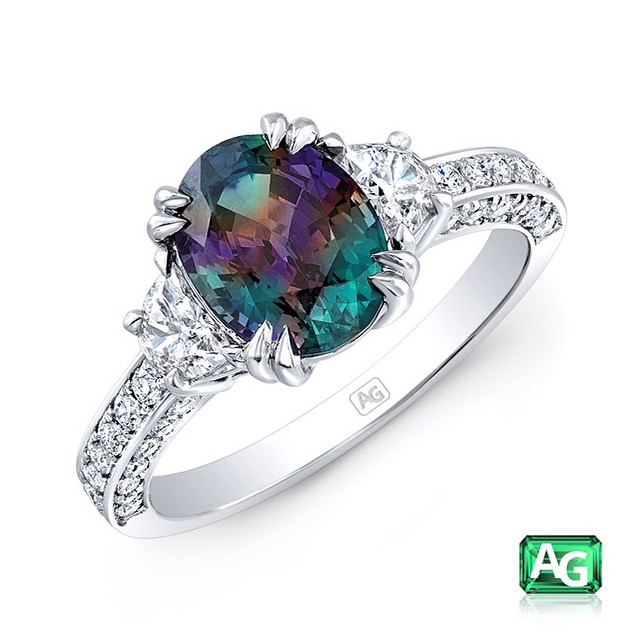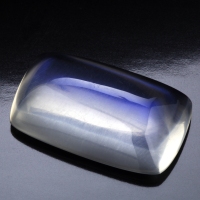By Amanda L Colborn
Happy birthday to all the June babies out there!
You’re all very lucky in that you have three very unique birthstones commemorating this special month! Unfortunately, I am not creative enough to also be able to work “Alexandrite” and “Moonstone” into this blog’s title.
But, let’s jump right into pearls!
PEARLS
Historically, pearls have been used as an adornment for centuries. They were one of the favorite gems of the Roman Empire. Later, during the Tudor period in England, the 1500’s were known as the Pearl Age.
Pearls are unique as they are the only gems from living sea creatures and require no faceting or polishing to reveal their natural beauty. In the early 1900s, the first successful commercial culturing of round saltwater pearls began. Since the 1920s, cultured pearls have almost completely replaced natural pearls in the market though we are seeing a strong revival of natural pearls.


ALEXANDRITE
A relatively modern gem, Alexandrite, was first discovered in Russia in 1831 during the reign of its namesake, Czar Alexander II, and is an extremely rare Chrysoberyl, with chameleon-like qualities.
Its color is a lovely green in both daylight and fluorescent light; it changes color to a purplish red in incandescent light. Due to its rarity, some jewelers stock synthetic versions of this enchanting gemstone. (Synthetic gemstones are man-made alternatives to the natural material, possessing the same physical, optical, and chemical properties as the natural gemstone.)
Here we have a video featuring a rare 6 carat Alexandrite ring from AG Gems:
[wpvideo IdwH6AQ1]

MOONSTONE
The third birthstone for June is the Moonstone. It was given its name by the Roman natural historian Pliny, who wrote that moonstone’s appearance altered with the phases of the moon — a belief that held until well after the sixteenth century.
A phenomenal gemstone, moonstones show a floating play of light (called adularescence) and sometimes show either a multirayed star or a cat’s eye. Considered a sacred stone in India, moonstones often are displayed on a background of yellow (a sacred color) and are believed to encapsulate within the stone a spirit whose purpose is to bring good fortune.
Part of the family of minerals called feldspar, moonstone occurs in many igneous and metamorphic rocks and comes in a variety of colors such as green, blue, peach, and champagne. The most prized moonstones are from Sri Lanka; India, Australia, the United States, Mayanmar, and Madagascar are also sources.

On behalf of everyone at the American Gem Society — we wish you a very happy June, full of joy and jewels!